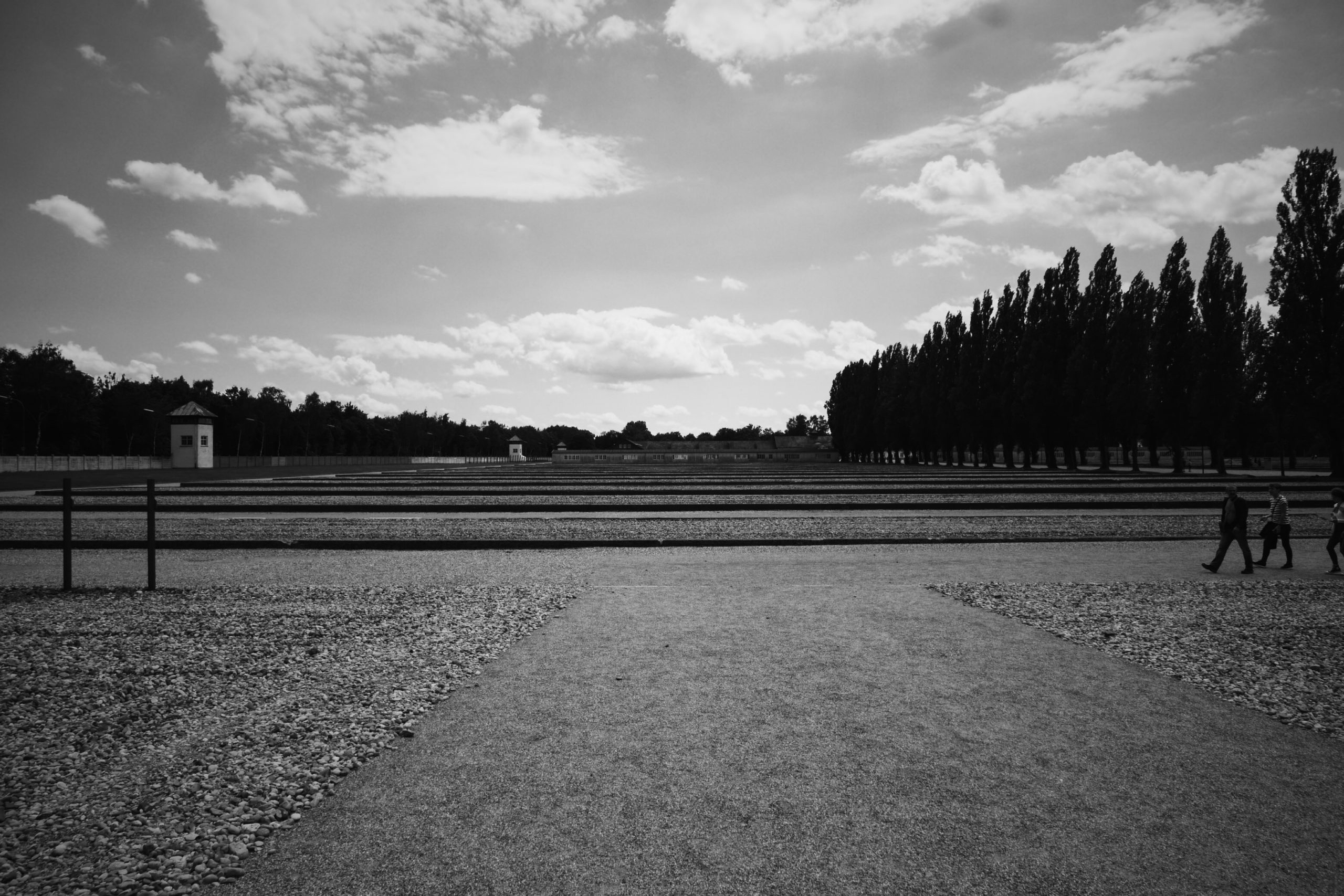
Dachau
On our last day in Munich, we took a drive to the Dachau Concentration Camp Memorial as we are not sure whether we will get to Poland on this trip to visit Auschwitz. As confronting and depressing as these places are, I wanted Jarrah to go to at least one of them.
Dachau was opened in March 1933, and served as a prototype and model for the other German concentration camps. Almost every community in Germany had members taken away to these camps. It was opened by Heinrich Himmler (the main architect of the Holocaust) and was initially a camp for political prisoners; however, it eventually evolved into a death camp where countless thousands of Jews died from malnutrition, disease and overwork or were executed. In addition to Jews, the camp’s prisoners included people from other groups that Hitler considered unfit for his new Germany, including artists, intellectuals, the physically and mentally handicapped and homosexuals. With the start of World War II, prisoners were used as slave labour to manufacture weapons and other materials for Germany’s war efforts. In addition, some prisoners were subjected to brutal medical experiments by the Nazis. The camp was liberated by U.S. forces on 29 April 1945.
I can’t begin to explain the feeling I get when I visit these former concentration camps, it’s hard to put into words. I suppose sorrow and dread because you know what happened here and you are immediately hit by the size and scale of these camps.
The next thing that is driven home again and again when viewing the pictures and reading the stories is the complete, total and utter disregard and lack of any respect for human life. I still find it incomprehensible how humans could treat other humans in this way. There were ~40,000 documented deaths at this camp, and thousands more that are undocumented.
Then there are the stories of bravery and kindness of some of the prisoners, being punished for refusing to beat fellow prisoners, when caught helping others, stealing food for them etc.
Stories of incredible determination and to fight for survival no matter what … “Despite the efforts of the SS to play off the various national, political and social prisoner groups against one another, a widespread solidarity reigned in the Dachau concentration camp. This solidarity saved the lives of many.” Then the stories of those that missed survival by mere days.
When you walk around the camp, their is an eerie silence, never any birds chirping. And whilst you walk around, you are very aware that on this exact ground you are walking on, the most atrocious, heinous crimes were committed and tens of thousands of people were suffering the most unimaginable horrors. That in this very spot, many lay dead.
There is a gate now in the indoor display with the words “Arbeit Mach Frei” – these same words are at the entrance to Auschwitz, the English translation is “Work Makes You Free”.
For anyone who is interested, here’s a link to a BBC article on the children of the Nazi war criminals – interesting read; “Nazi Legacy: The Troubled Decendants” and this one on BMW’s use of Nazi Slave Labour during WW II.
In Memory of all those who suffered and lost their lives in the various concentration camps and in memory of the members of the resistance and the allies that fought and lost their lives to end this horrific tyranny.
“NEVER AGAIN”




















4 Comments
Diane Cooper
And yet such a place of peace and beauty now – clearly blessed by the souls of those who perished there. Thank you for sharing. xx
Lynda
Such a painful but powerful reminder to us all.
Deb, Pep n Tayla
Goosebumps all over reading and viewing these images – I have never visited a former concentration camp and (don’t know if I would be strong enough) but I did spend time immersed (in horror) throughout the Holocaust Memorial Exhibition floor at the Imperial War Museum in London. The sheer scale of the Holocaust atrocities is so hard to comprehend and utterly evil, the perpetrators bereft of any soul or compassion. There is a long long glass cabinet in one of the exhibits full of discarded shoes of all sizes (including children) and it beggars belief, my eyes are filling up just remembering it. The world should never forget that “humanity” could be capable of such despicable acts, and far too many people turned a bind eye to it for far too long. xx
Patricia Forner
I visited the Nazi concentration camps with my parents when I was a teenager – I think 19 – and the first reaction I remember having was nausea and then followed by an intense interest in what I was seeing and reading that I did not want to leave until I had digested everything. Since coming to Australia, over a year ago now, I read “The Tattooist of Auschwitz” which I recommend highly to everyone. We had friends in Melbourne who survived those camps, how, I have no idea, but the book helped me to see how it was possible. Good for you for taking time to confront that piece of human history that should never be forgotten. Unfortunately, such horror still exists, and we saw it during the war in Viet Nam, and such treatment continues to exist in China’s treatment of the Ughir (sp?) people. Human nature is not kind.